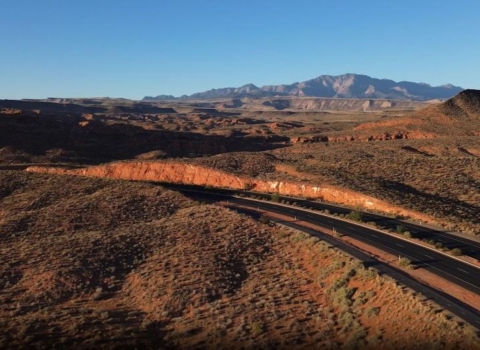DENVER - Today the U.S. Fish and Wildlife Service opened a 30-day public comment period to help inform future conservation of two rare Colorado and Utah plants: Graham's beardtongue and White River beardtongue. Information provided by the public will help Service biologists better determine what protections, if any, are needed under the Endangered Species Act to ensure these unique western flowering plant species continue to endure for future generations.
The Service is revisiting our previously published 2013 proposed listing and critical habitat rules. We will reevaluate stressors identified in the 2013 proposed listing rule and the overall status of each plant species as we work to make a final determination about the conservation status of each plant species. New survey information shows that Graham’s beardtongue and White River beardtongue have larger total population sizes than previously known and stable population trends.
The Graham's beardtongue produces vivid, two-lipped pink flowers and occurs along a horseshoe-shaped band about 80 miles long and 6miles wide extending from northeastern Utah to northwestern Colorado. White River beardtongue features showy lavender flowers, and its range similarly extends from northeastern Utah to northwestern Colorado, although the majority of the White River beardtongue’s range occurs in a distance of about 20 miles. Both native plant species’ colorful flowers attract and support a community of many native pollinators.
Since 2013, the Service has worked with conservation partners at the federal, state and local levels to proactively conserve habitat for these local endemic plants found nowhere else on Earth. New information available after the 2013 proposed rules were published includes: new survey and monitoring information, a 2014 Conservation Agreement and 2018 addendum, and modification of conservation areas under the 2014 Conservation Agreement.
Parties to the 2014 Conservation Agreement include: the Service; Bureau of Land Management; Utah Department of Natural Resources; State of Utah School and Institutional Trust Lands Administration; Utah Public Lands Policy Coordination Office; Uintah County, Utah; and Rio Blanco County, Colorado. These partners remain committed to conservation actions such as establishing more than 44,000 acres of occupied and unoccupied suitable habitat as protected conservation areas with limited surface disturbance and avoiding the two plant species by 300 feet to address potential threats from energy development.
The Service has published a notice in the Federal Register announcing that public comments will be accepted through October 15, 2019. Public comments and scientific information related to the Graham’s beardtongue and White River beardtongue may be submitted electronically or via postal mail. For electronic submissions, go to http://www.regulations.gov. In the Search box, enter FWS–R6–ES–2019–0029. Submit comments by U.S. mail or hand-delivery to:
Public Comments Processing, Attn: FWS–R6–ES–2019–0029
U.S. Fish and Wildlife Service, MS: BPHC
5275 Leesburg Pike
Falls Church, VA 22041–3803.
The purpose of the Endangered Species Act is to protect and recover imperiled species and the ecosystems upon which they depend. A rigorous scientific analysis evaluating potential threats as well as current and future conditions is conducted prior to making any determination to list or not list a species.
The U.S. Fish and Wildlife Service works with others to conserve, protect, and enhance fish, wildlife, plants, and their habitats for the continuing benefit of the American people. For more information, connect connect with us through any of these social media channels: Facebook, Twitter, Flickr, YouTube, and Instagram.


